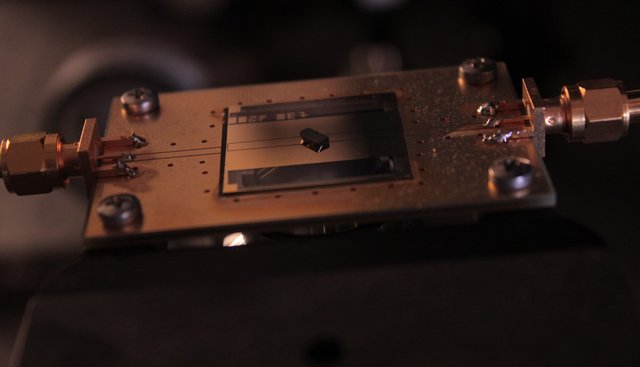Scientists Finally Observed Time Crystals, But What The Hell Are They?

From Gizmodo
My first question was, "What is a time crystal?" Harvard graduate students Soonwon Choi, Joonhee Choi and postdoctoral researcher Renate Landig all started laughing. "That's a very good question," said Soonwon. The time crystal's silly science fiction name shrouds its deep quantum mechanical nuance. Sometimes a name is simply the easiest approximation to describe something far more complex than inquiring minds can conjure. The Harvard team's time crystal (Image: Soonwon Choi)https://www.gizmodo.com.au/2017/03/scientists-finally-observed-time-crystals-but-what-the-hell-are-they/Two groups of scientists report that they have observed exotic time crystals, systems of atoms whose properties arrange themselves, or "crystallise" in time like the way solids can crystallise in space. The two groups' vastly different atomic arrangements aren't perpetual motion machines, weapons or time travel devices — but their strange behaviour sheds light on a whole new class of materials with properties different from any solid, liquid or gas you've ever encountered.
"The experiments are beautiful and open up a new class of states of matter that really qualitatively are new and fascinating in their own right," MIT theoretical physicist and Nobel laureate Frank Wilczek told Gizmodo. Wilczek proposed time crystals in 2012, while wondering whether certain properties changing in time, rather than in space, could yield new phases of matter. He said "the new discoveries... are certainly a recognisable descendant of the original vision and have retained the name".
Physical laws are laden with symmetries — instances where an action produces the same reaction in a different environment. If you punch a solid wall with the same force, it will hurt equally no matter where along the length of the wall you punch it or what time of day it is — those are spatial and time translation symmetries. Some symmetries can break. Crystals, solids where particles arrange themselves in a lattice, break a so-called spatial translational symmetry, since the molecules prefer a specific place in space. If you had a picket fence instead of a solid wall, that might break a spatial translational symmetry, since punching a picket feels different than punching the space between planks.
Follow @contentjunkie to stay up to date on more great posts like this one.

Superman's Arctic Fortress confirmed.
This post has been ranked within the top 50 most undervalued posts in the first half of Mar 09. We estimate that this post is undervalued by $4.36 as compared to a scenario in which every voter had an equal say.
See the full rankings and details in The Daily Tribune: Mar 09 - Part I. You can also read about some of our methodology, data analysis and technical details in our initial post.
If you are the author and would prefer not to receive these comments, simply reply "Stop" to this comment.